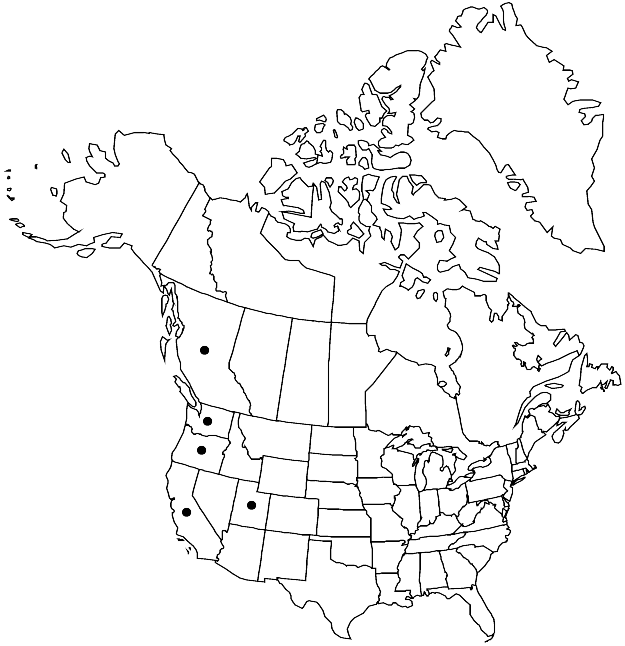Pohlia pacifica
Contr. Univ. Michigan Herb. 15: 268, fig. 25. 1982.
Plants small, green, very glossy. Stems 0.3–1 cm. Leaves erect to ± spreading, lanceolate, 0.9–1.8 mm; base not or scarcely decurrent; margins serrulate to serrate in distal 1/3, coarsely serrate at apex; costa subpercurrent; distal medial laminal cells linear-vermicular, 110–145 µm, walls thin. Specialized asexual reproduction absent. Sexual condition dioicous; perigonial leaves ovate; perichaetial leaves differentiated, linear-lanceolate. Seta orangebrown. Capsule inclined 120–180°, brown to stramineous, pyriform, neck 1/3 urn length; exothecial cells short-rectangular, walls sinuate; stomata superficial; annulus present; operculum convex-conic; exostome teeth yellowbrown, narrowly triangular-acute; endostome hyaline, basal membrane 1/2 exostome length, segments tapered apically, distinctly keeled, broadly perforate, cilia short to rudimentary. Spores 15–21 µm, finely roughened.
Phenology: Capsules mature spring (Apr–Jun).
Habitat: Acid clay or sandy soil in disturbed places, stream banks, ditches
Elevation: low elevations
Distribution

B.C., Calif., Oreg., Utah, Wash.
Discussion
Pohlia pacifica is similar to P. lescuriana, but is distinguished by its glossy leaves and longer laminal cells. The perichaetial leaves of P. pacifica are up to 3.2 mm long.
Selected References
None.
Lower Taxa
"tapered" is not a number."narrow" is not a number.